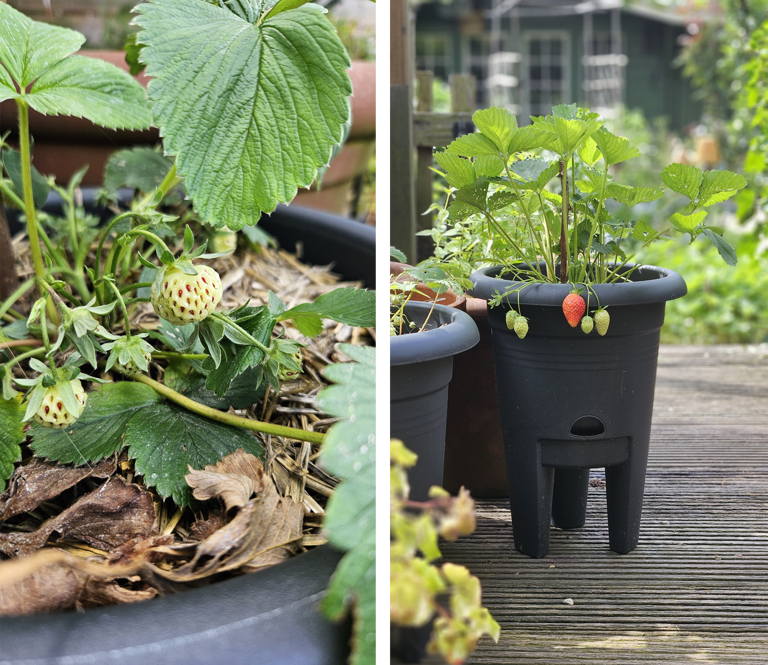
Growing your own strawberries? Use a strawberry pot!
Planting Strawberries
Fill your strawberry pot with light, well-draining potting soil (preferably peat-free). Mixing in some compost can enhance the soil's fertility. Plant one strawberry plant per pot, making sure it's not planted too deep or with roots exposed above the soil, as either condition can cause the plant to die. Place the pot in a sunny location; the more sun, the more flowers and fruit your plant will produce.
Watering
Keep the potting soil evenly moist. Strawberries in pots dry out faster than those in the ground, so regular watering is essential. However, avoid overwatering, as this can lead to root rot and watery-tasting fruit. The elho strawberry pot features a special opening at the bottom for watering. Water the plant from below; this encourages the plant to seek out water, resulting in deeper roots and a sturdier plant. This makes the plant more drought-resistant and less susceptible to disease.

Feeding
Add a long-acting, organic fertiliser to stimulate growth. Often, this is already included in the potting soil, so you don’t need to add anything for the first three months. After that, you can add organic fertilisers once a year when flowering begins. Choose a fertiliser rich in potassium, as this promotes the growth of fruit and better-tasting strawberries.
Protecting the plants
Strawberries are not only loved by humans but also by mice and birds. While mice are less likely to reach strawberries grown in pots, birds can devour much of your harvest. TO protect your plants, cover them with a cloche made of chicken wire. Avoid nets, as birds can become entangled in them.
Different Varieties
To enjoy a prolonged strawberry harvest, consider growing different varieties. Here are some options:
- Snow White – small, sweet white strawberries (harvest time June)
- Lambada – delicious sweet strawberry with lower yield (harvest time May – June)
- Korona – tasty and sweet, medium-sized with high yield (harvest time June)
- Ostara – small but productive and sweet strawberries (harvest time June – September)
- Furore – high yield and delicious taste (harvest time June – September)

Harvesting
Strawberries do not ripen further after being picked. Leave them on the plant until they are deep red and slightly soft to the touch. Strawberries warmed by the sun taste fantastic. Store the strawberries in the fridge and wash them just before eating to retain their freshness. They are best consumed within a few days. If you have an abundance of strawberries, freeze them by removing the stems and placing them flat in a resealable bag in the freezer. Frozen strawberries are ideal for smoothies or making delicious jam!
Making strawberry jam
What you need:
- 500 grams of strawberries
- 250 grams of cane sugar
- 2 gelatine sheets or 2 grams of Agar Agar (plant-based)
- 1 tablespoon of lemon juice (for longer shelf life)
Preparation:
- Wash the strawberries, remove the stems, and cut them into small pieces.
- Put the strawberries, sugar, and lemon juice in a large pan. Heat the mixture over medium heat, stirring regularly until the sugar has dissolved.
- Use a wooden spoon to mash the strawberries while cooking for a smooth jam, or leave small pieces for a chunky jam.
- Bring the mixture to a boil and let it simmer for 10-15 minutes, stirring regularly to prevent burning.
- Pour the hot jam into clean (sterilised) jars and screw the lids on tightly.
- Let the jars cool. They will keep for 3-6 months this way. After opening, store in the fridge.
Who is Floor?

Picture: Arkenbout Photography